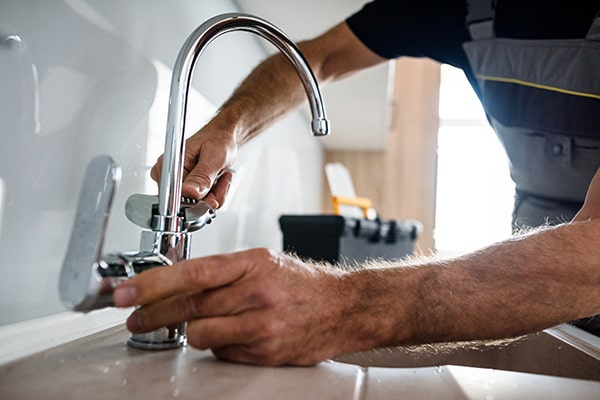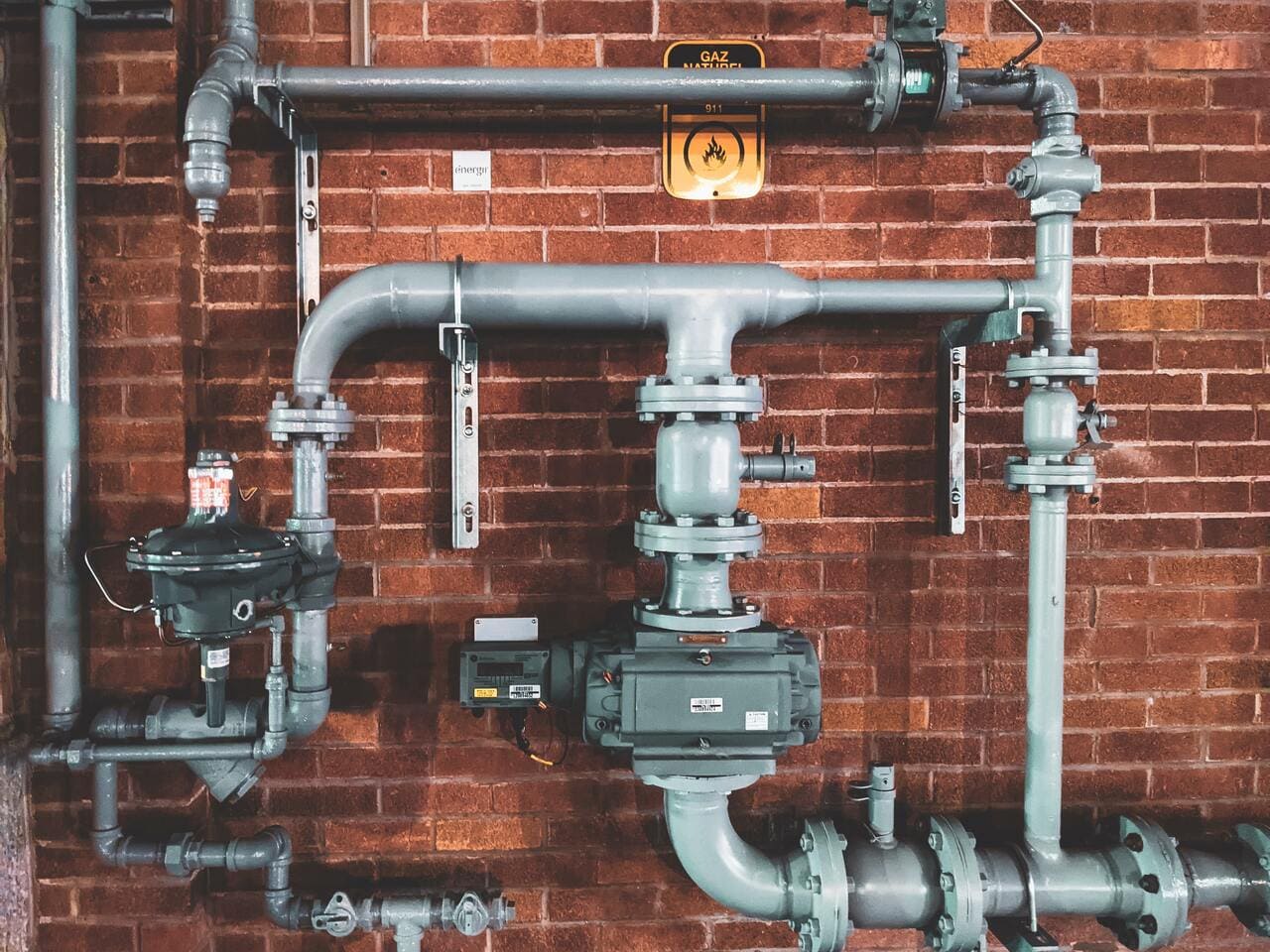What's Next in Plumbing: Trends and Advancements
What's Next in Plumbing: Trends and Advancements
Blog Article
They are making a few good annotation relating to Innovative Plumbing Trends Transforming Construction overall in this content which follows.

Intro
The plumbing industry is going through a transformative stage driven by technological innovations and expanding problems for sustainability and effectiveness. This post explores arising fads and advancements shaping the future of pipes.
Smart Plumbing Equipments
Incorporating clever innovation right into plumbing systems enables remote tracking, leak discovery, and automated upkeep. Smart sensing units and IoT (Net of Points) devices permit homeowners and plumbing technicians to keep an eye on water use and discover problems in real-time, leading to more effective resource monitoring and positive upkeep.
Water Effectiveness Solutions
With boosting emphasis on water preservation, ingenious solutions are being developed to lessen water wastefulness in plumbing systems. High-efficiency fixtures, greywater recycling systems, and smart watering controllers are among the innovations assisting customers decrease their water impact while maintaining comfort and convenience.
Lasting Products
The change towards sustainability encompasses plumbing products, with a growing preference for environment-friendly alternatives. Eco-friendly piping materials, such as PEX (cross-linked polyethylene) and HDPE (high-density polyethylene), deal longevity and resistance to deterioration without jeopardizing ecological stability.
Predictive Upkeep
Anticipating maintenance strategies take advantage of data analytics and machine learning algorithms to anticipate and prevent plumbing problems prior to they take place. By examining historical data and efficiency metrics, anticipating maintenance algorithms can recognize patterns and anomalies, making it possible for positive interventions to stay clear of pricey repair services and disturbances.
Augmented Fact in Pipes
Enhanced Fact (AR) technology is revolutionizing plumbing by offering specialists with real-time visual assistance for troubleshooting and repair work jobs. AR-enabled smart glasses or mobile applications overlay electronic information onto the physical setting, assisting plumbing professionals imagine pipeline designs, identify concealed leaks, and carry out repair services with accuracy.
Impact of 3D Printing
The advent of 3D printing has presented new opportunities in producing pipes components. From custom-designed components to elaborate pipeline fittings, 3D printing enables fast prototyping and on-demand manufacturing, reducing preparations and making it possible for greater personalization in plumbing design.
Health And Wellness Qualities
In response to increased problems for health and safety, plumbing fixtures are including functions such as antimicrobial surface areas, touchless procedure, and self-cleaning devices. These innovations not just improve health however likewise advertise individual convenience and ease.
Hygiene-focused Fixtures
Touchless taps, self-sanitizing bathrooms, and antimicrobial surfaces are coming to be increasingly widespread in residential and industrial setups, minimizing the threat of bacterium transmission and advertising a cleaner, healthier atmosphere.
Water High Quality Tracking
Developments in water top quality monitoring technologies allow house owners to monitor the pureness and safety and security of their water supply in real-time. Smart water high quality sensing units can identify contaminants, pH levels, and temperature variations, equipping users to take proactive steps to guarantee water security.
Remote Pipes Providers
Remote diagnostics and online support are changing the means pipes solutions are delivered. Through video conferencing and remote access modern technologies, plumbers can repair problems, supply support for DIY repairs, and even perform remote inspections, providing higher availability and ease to homeowners.
Obstacles and Opportunities
While plumbing technologies hold enormous guarantee, they likewise existing challenges such as information personal privacy concerns, regulative compliance, and the requirement for workforce training. Resolving these obstacles needs cooperation in between sector stakeholders and governing bodies to make sure risk-free and responsible application of new technologies.
Regulatory Landscape
Governing frameworks play a crucial duty fit the fostering of plumbing advancements, with requirements and codes governing everything from water effectiveness to product security. As innovations remain to evolve, regulative bodies need to adjust to ensure customer defense and ecological stewardship.
Future Outlook
The future of pipes is identified by proceeded development and assimilation with other fields such as IoT, renewable resource, and structure automation. By accepting lasting methods, leveraging arising modern technologies, and prioritizing user-centric design, the pipes sector is positioned to attend to the developing demands of culture while decreasing its environmental impact.
Conclusion
Finally, the future of plumbing is specified by a merging of innovation, sustainability, and user-centric design. By accepting smart options, sustainable materials, and proactive upkeep techniques, the plumbing industry can improve performance, advertise security, and contribute to a much more lasting future.
The Future of Plumbing: Trends and Innovations to Watch
Introduction to Future Plumbing Trends
The future of plumbing is being shaped by several key factors, including technological advancements, environmental concerns, and changing consumer expectations. These factors are driving the development of new products, services, and practices that enhance the efficiency, sustainability, and convenience of plumbing systems.
Key Trends and Innovations in Plumbing
Smart Plumbing Systems: The integration of smart technology into plumbing systems is transforming the way we manage water usage and detect issues. Smart leak detectors, automated water shut-off valves, and smart faucets are just a few examples of how technology is enhancing plumbing systems. These devices provide real-time data and remote control capabilities, allowing homeowners to monitor and manage their water usage more effectively. Water Conservation and Efficiency: With increasing concerns about water scarcity, there is a growing emphasis on water conservation and efficiency. Innovations such as low-flow fixtures, greywater recycling systems, and rainwater harvesting are becoming more popular. Plumbers are adopting these technologies to help customers reduce their water consumption and save on utility bills. Sustainable Materials: The use of sustainable materials in plumbing systems is gaining traction. This includes the adoption of recyclable and biodegradable materials, as well as the use of non-toxic and eco-friendly products. Sustainable materials help reduce the environmental impact of plumbing systems and promote long-term sustainability. Energy-Efficient Water Heaters: Advances in water heating technology are leading to the development of more energy-efficient systems. Tankless water heaters, solar water heaters, and heat pump water heaters are becoming more prevalent. These systems offer significant energy savings and reduce the carbon footprint of homes and businesses. Trenchless Technology: Trenchless technology is revolutionizing the way plumbing repairs and installations are conducted. This method allows for the repair or replacement of pipes without extensive excavation, minimizing disruption and reducing costs. Techniques such as pipe bursting and cured-in-place pipe (CIPP) lining are gaining popularity. Health and Safety: The focus on health and safety is driving innovations in plumbing systems. Touchless faucets and fixtures, antimicrobial materials, and improved water filtration systems are being developed to enhance hygiene and protect public health. Plumbers are adopting these innovations to meet the growing demand for safer and healthier plumbing solutions. Remote Diagnostics and Monitoring: The ability to diagnose and monitor plumbing systems remotely is becoming increasingly important. Remote diagnostic tools and sensors allow plumbers to identify issues and perform maintenance without the need for on-site visits. This enhances efficiency and reduces the need for costly emergency repairs. Impact of Future Trends on the Plumbing Industry
Enhanced Efficiency: The adoption of smart technology and energy-efficient systems will enhance the efficiency of plumbing systems. This will lead to reduced water and energy consumption, lower utility bills, and improved performance. Sustainability: The focus on sustainability will drive the development and adoption of eco-friendly plumbing solutions. This will contribute to the conservation of natural resources, reduction of waste, and protection of the environment. Improved Customer Experience: The integration of technology and innovative solutions will improve the customer experience. Homeowners will have greater control over their plumbing systems, access to real-time data, and the ability to manage their water usage more effectively. Increased Demand for Skilled Plumbers: The adoption of new technologies and materials will require plumbers to acquire new skills and expertise. There will be an increased demand for skilled plumbers who are knowledgeable about the latest trends and innovations. Cost Savings: The use of efficient and sustainable plumbing solutions will result in cost savings for both homeowners and businesses. Reduced water and energy consumption, lower maintenance costs, and fewer emergency repairs will contribute to overall affordability. Preparing for the Future of Plumbing
Stay Informed: Keep up-to-date with the latest trends and innovations in the plumbing industry. Attend industry conferences, participate in training programs, and engage with manufacturers to stay informed. Invest in Training: Ensure that you and your team are trained in the latest technologies and installation techniques. This will enable you to offer cutting-edge solutions to your customers and stay competitive in the market. Promote Sustainable Solutions: Highlight the benefits of eco-friendly and energy-efficient plumbing solutions to your customers. Educate them about the advantages of adopting sustainable practices and products. Leverage Technology: Embrace smart technology and remote diagnostic tools to enhance your services. Offer remote monitoring and maintenance options to provide added convenience and value to your customers. Collaborate with Manufacturers: Partner with manufacturers of innovative plumbing products to gain access to the latest solutions and technical support. This can also provide opportunities for joint marketing efforts. Focus on Customer Education: Educate your customers about the benefits and functionality of new plumbing technologies. Provide guidance on how to use smart systems and maintain sustainable plumbing solutions. Conclusion
The future of plumbing is being shaped by exciting trends and innovations that promise to enhance efficiency, sustainability, and convenience. By staying informed and embracing these changes, plumbers can provide superior services to their customers and contribute to a more sustainable future. The adoption of smart technology, sustainable materials, and energy-efficient systems will drive the evolution of the plumbing industry, creating new opportunities and challenges. By preparing for the future, plumbers can ensure their success in a rapidly changing market.

I was shown that write-up on 7 Plumbing Industry Trends You Need To Know from someone on our other web property. Are you aware of another person who is intrigued by ? Why not promote it. Thanks a lot for going through it.
Visit My Web Page Report this page